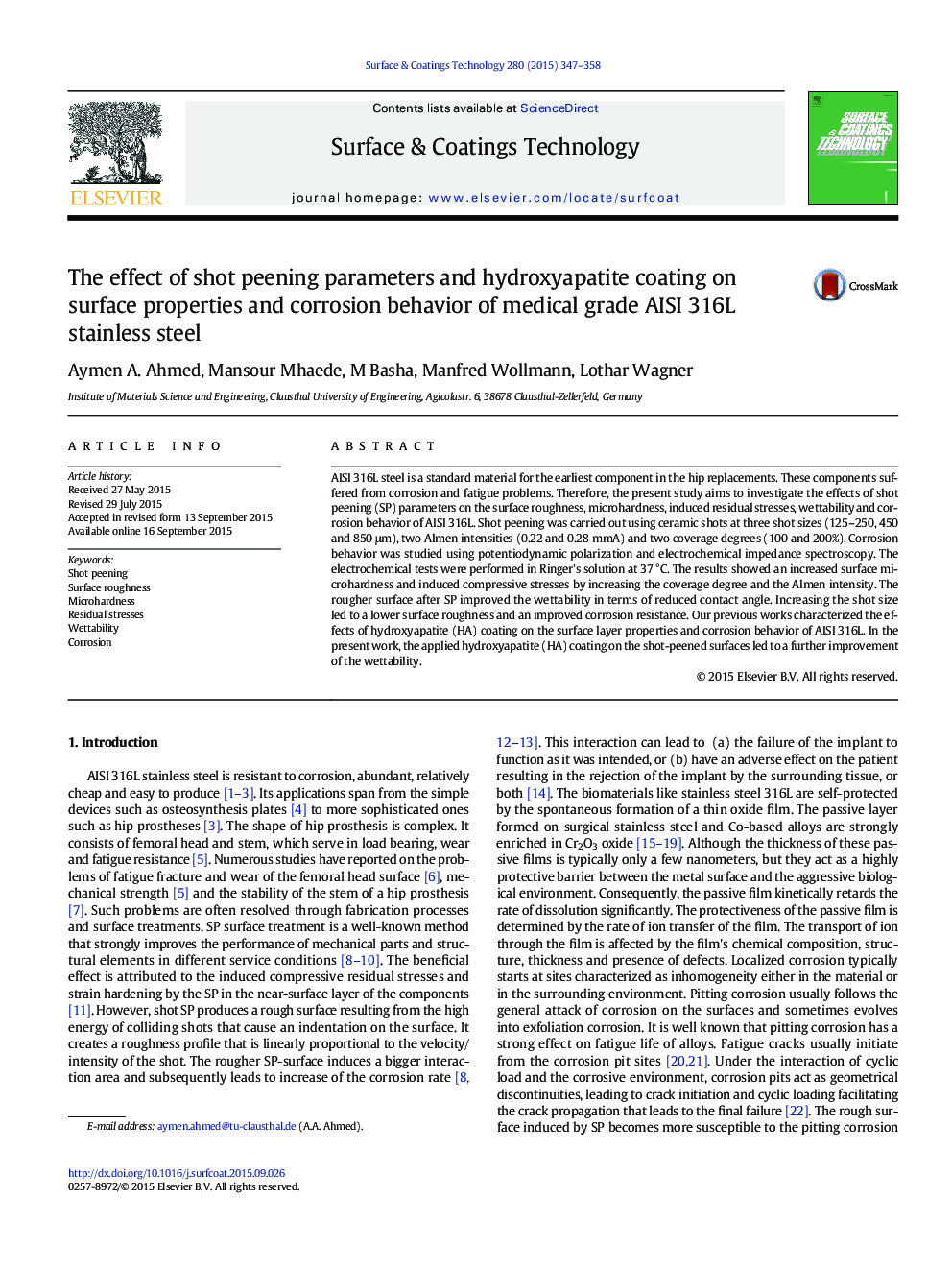| Article ID | Journal | Published Year | Pages | File Type |
|---|---|---|---|---|
| 8026218 | Surface and Coatings Technology | 2015 | 12 Pages |
Abstract
AISI 316L steel is a standard material for the earliest component in the hip replacements. These components suffered from corrosion and fatigue problems. Therefore, the present study aims to investigate the effects of shot peening (SP) parameters on the surface roughness, microhardness, induced residual stresses, wettability and corrosion behavior of AISI 316L. Shot peening was carried out using ceramic shots at three shot sizes (125-250, 450 and 850 μm), two Almen intensities (0.22 and 0.28 mmA) and two coverage degrees (100 and 200%). Corrosion behavior was studied using potentiodynamic polarization and electrochemical impedance spectroscopy. The electrochemical tests were performed in Ringer's solution at 37 °C. The results showed an increased surface microhardness and induced compressive stresses by increasing the coverage degree and the Almen intensity. The rougher surface after SP improved the wettability in terms of reduced contact angle. Increasing the shot size led to a lower surface roughness and an improved corrosion resistance. Our previous works characterized the effects of hydroxyapatite (HA) coating on the surface layer properties and corrosion behavior of AISI 316L. In the present work, the applied hydroxyapatite (HA) coating on the shot-peened surfaces led to a further improvement of the wettability.
Related Topics
Physical Sciences and Engineering
Materials Science
Nanotechnology
Authors
Aymen A. Ahmed, Mansour Mhaede, M Basha, Manfred Wollmann, Lothar Wagner,
